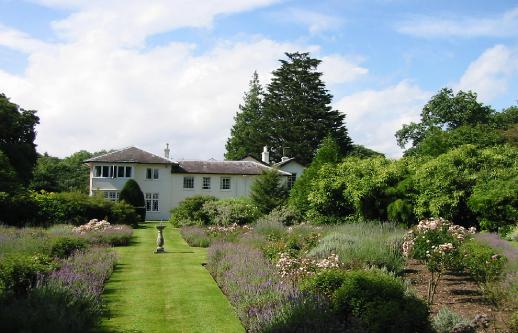
 |
||||||||||
 |
Welcome to our web site which tells you about the Gertrude Jekyll designed garden at Durmast House, Burley, New Forest, Hampshire. The house dates from the 1840s and originally had a Victorian garden but the Gertrude Jekyll plans were commissioned by Miss Nelly Baring, of the Baring banking family and Miss Jekyll’s cousin, in 1907 and completed in 1910, over a hundred years ago. When she drew up the plans for Durmast, Miss Jekyll was aged 64 and at the height of her fame as the leading Edwardian garden designer. In 1908 she wrote her most famous book, Colour in the Flower Garden, which Professor Richard Bisgrove of Reading University has described as “one of the most influential gardening books in the Twentieth century”. |
|
In this book she described her ideas on using drifts of colour as opposed to the rigid Victorian ideas on planting, so called "Parks and Works" planting. She drew on her experience as an artist and member of the Arts and Crafts movement in Britain. The Durmast garden demonstrates her ideas very well with two contrasting borders; one border has hot colours with reds, yellows and orange in a blended theme and the other with a cool yellow and blue coloured scheme. A large rose garden in the shape of two halves of a diamond is edged with Munstead lavender and there is a typical Jekyll scheme for a long herbaceous border in the cottage garden style but with Jekyll's colour blends. She also designed an azalea walk leading to a long chain of old roses next to a meadow hedge, and for the Autumn, two Michaelmas Daisy borders were added next to the old Victorian rockery.
The garden was derelict and the process of renovation is about three quarters complete.The renovation has closely followed the original Gertrude Jekyll plans for the garden which are now lodged with the University of California in Berkeley, near San Francisco. The garden is listed in the Hampshire County Register of Historic Gardens. The garden is interesting in most seasons; in early Spring there is a fine show of daffodils and snowdrops, followed by azaleas and rhododendrons and the start of the rose flowers. In Summer the large borders' colour changes as the season progresses, evidence of Gertrude Jekyll’s use of plants to make different colours blend as we pass from early Summer into high Summer. In Autumn there are vibrant golds and yellows against a background of tall Miscanthus grasses. Just before Winter the Michaelmas borders make a last show. Even in Winter the bare bones of the garden plans can be seen. For all garden lovers, particularly those who would like to learn more of Miss Jekyll’s ideas and how they can be accommodated in today's smaller gardens, a visit to Durmast Garden should not be missed. One can make an appointment to see the garden ( 01425 402132 or 00441425 402132 from abroad or email piers@durmast.demon.co.uk) Open Days for the National Garden Scheme charity are listed in the yellow book or on www.ngs.org.uk . Garden historical groups, students of Gertrude Jekyll or garden clubs or other organisations such as U3A are welcome to visit with a talk on the garden and refreshments.The Durmast House flat is also available for rent (see later) The garden has featured on BBC's Gardeners World (with Carol Klein) and magazines eg Discover Britain and The Field. The garden has also been visited by garden writers such as Judith Tankard, Anna Pavord and Jane Balfour. |
||